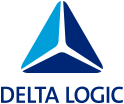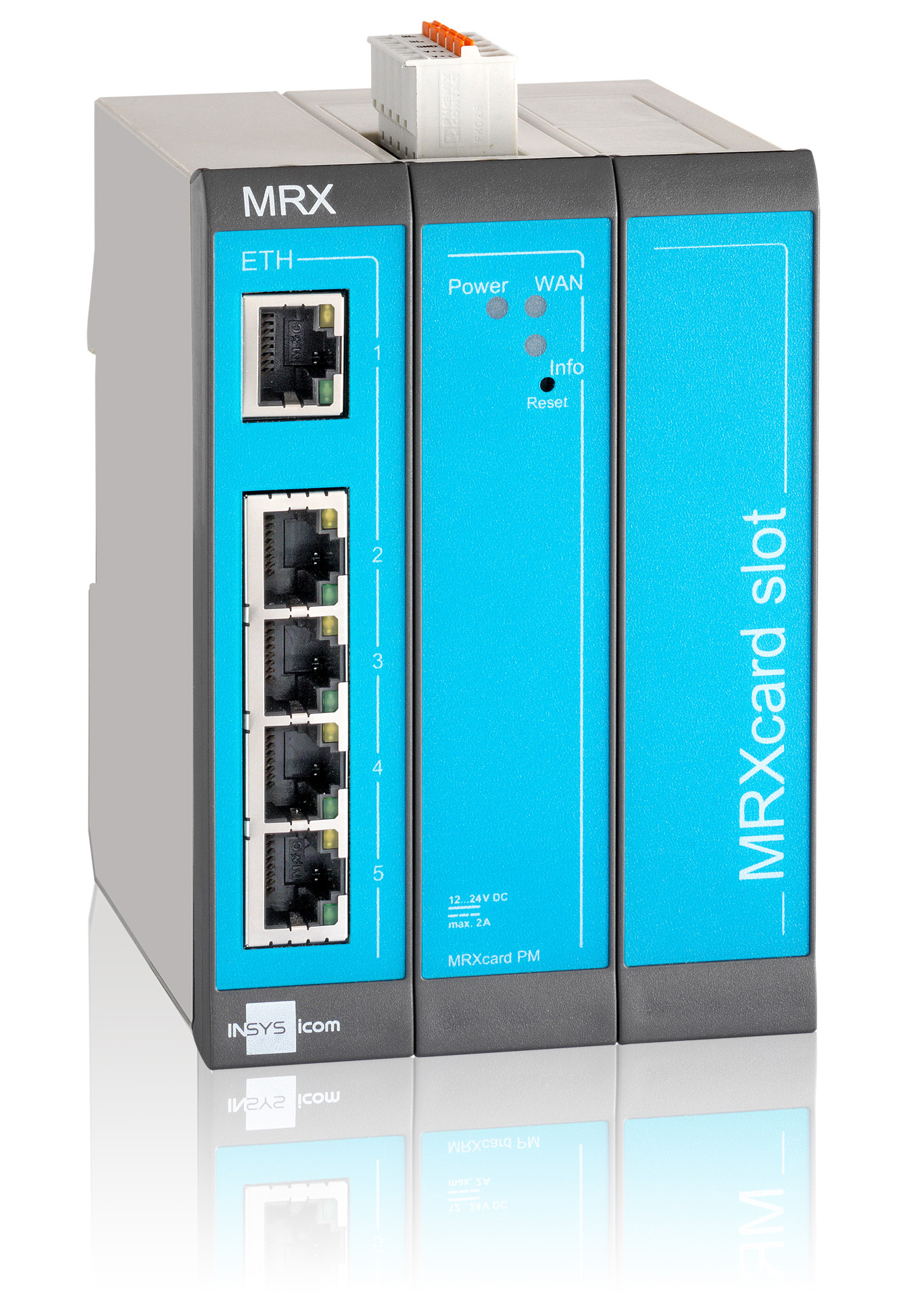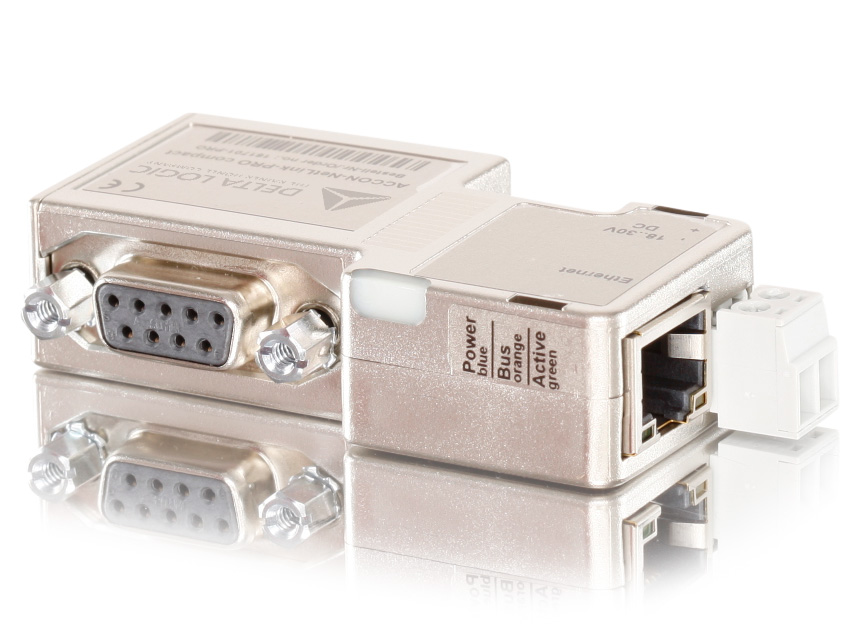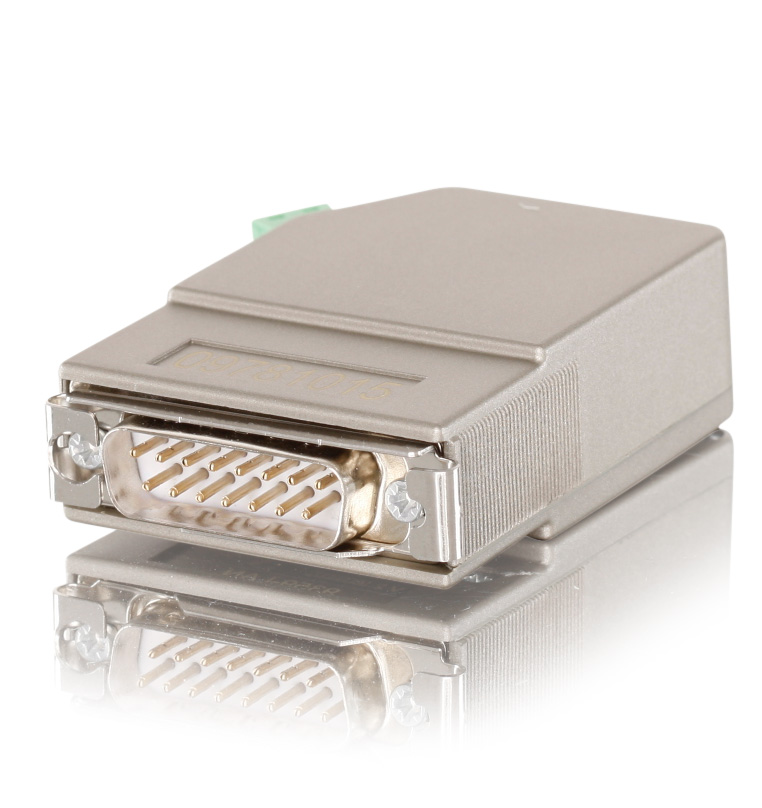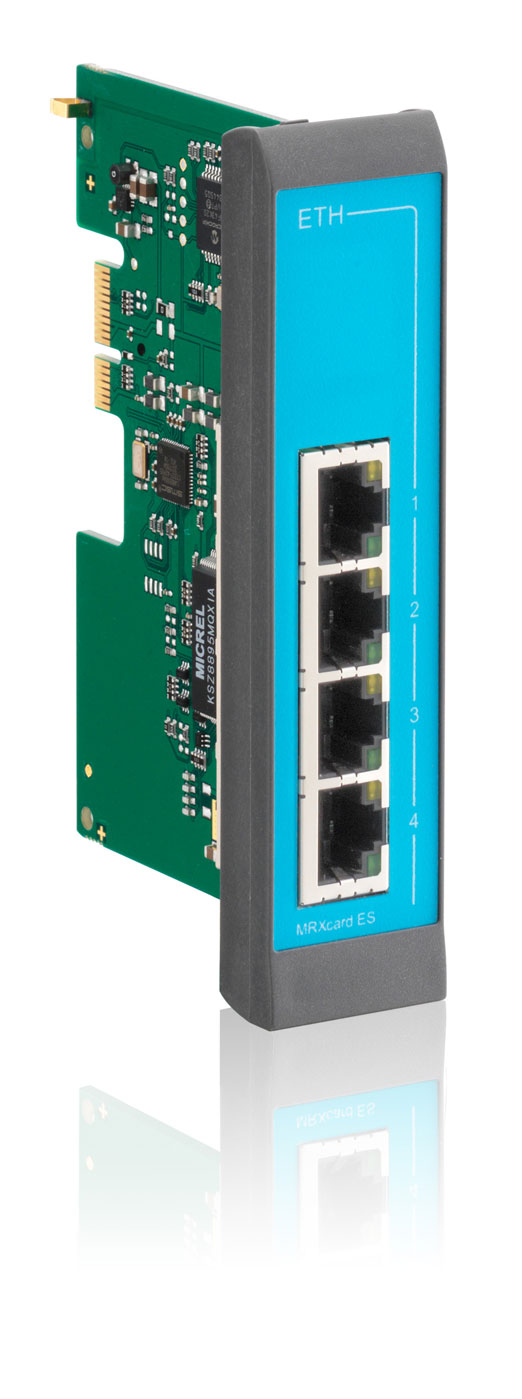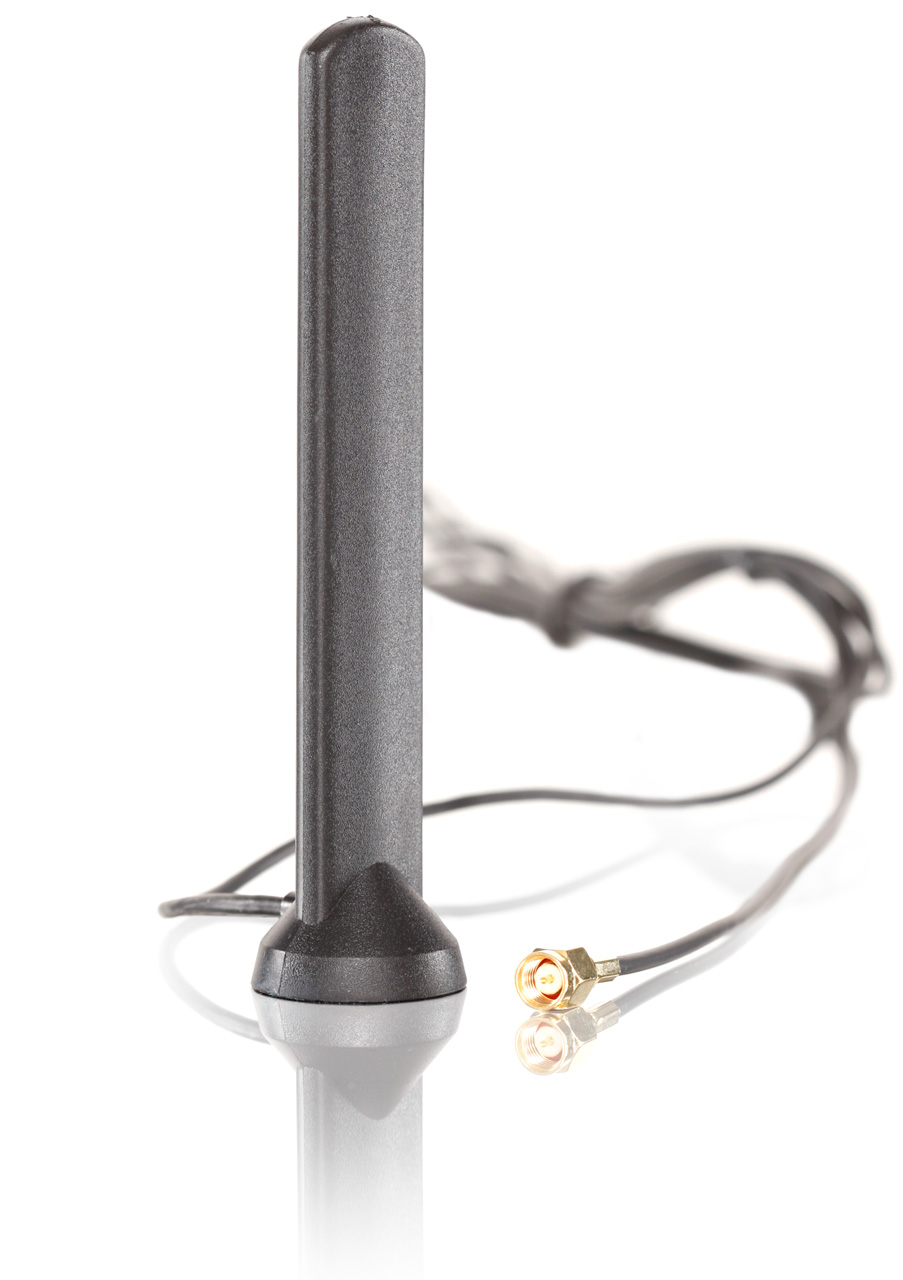VPN Router MRX3-LAN
Modular VPN router suitable for every application
- Full-modular in widths 3 and 5, variants for LAN, LTE and DSL
- Flexible expandability through plug-in cards
- Universal WAN technologies (LTE/DSL/LAN/fiber - also combined as failover)
- Extensive routing functions
- IT security at KRITIS level
- IoT-ready
- Quick start for DELTA LOGIC Connectivity Service
Fully modular industrial router for optimal coupling of your networks.
Wide range of applications
The two housing widths
Two housing widths are available for the MRX series
- MRX3: Here you have 3 slots at your disposal, two of which are defined by the selected base variant. In the third slot you can insert any other module (MRXcard)
- MRX5: Here you have 5 slots at your disposal, two of which are defined by the respective selected basic variant. Any other modules (MRXcard) can be inserted into the other three slots.
The three basic variants
The MRX series is available in three basic variants, each with different basic equipment.
- The basic variant MRX-LAN consists of an Ethernet module with five LAN ports, as well as a power module for power supply and with 2 digital inputs. The five LAN ports can be divided into up to five IP networks.
- The basic variant MRX-LTE consists of an Ethernet module with five LAN ports, as well as a LTE module with integrated power supply and 2 digital inputs. The five LAN ports can be divided into up to five IP networks. The world variant supports a greater variety of cellular frequencies.
- The basic variant MRX-DSL consists of an Ethernet module with five LAN ports, as well as a DSL module with integrated power supply and 2 digital inputs. The five LAN ports can be divided into up to five IP networks. MRX-DSL is available for DSL-Annex A and for DSL-Annex B.
Note: ADSL connections in Germany are usually operated in the Annex B variant. You can obtain precise information on the Vairante used (Annex A or Annex B) from your provider of the connection. This applies especially to connections outside Germany.
Various expansion options
If the possibilities of the respective basic modules are not sufficient for you, you can extend your MRX at any time by different further modules, so-called MRXcards. More detailed information about the available modules can be found in the category Apps & Acessories.
Convincing and versatile
Technical highlights
- Segmentation into several local IP networks
- Multiple VPN tunnels can be used in parallel
- Firewall in the tunnel (e.g. demarcation of remote accesses)
- Flexible administration with profile manager
- Access management via user roles
- Advanced event-based control (e.g. profiles, connections, redundancy)
- High performance for broadband networks and high VPN data rate
- Made in Germany
| Mobile communikation (MRX LTE and world only) | |
| Frequency bands | 4G/LTE: 800, 900, 1.800, 2.100, 2.600 MHz; LTE Cat. 3 (DL: max. 100 Mbps, UL: max. 50 Mbps) 3G/UMTS/HSPA: 900, 1.800, 2.100 MHz; UMTS, HSPA+ (DL Cat. 24, UL Cat. 6) 2G/GPRS/EDGE: 900, 1.800 MHz; GPRS/EDGE Class 12 |
| Antenna connection | 2x SMA female (2G/3G/4G: Main, 3G: Rx Diversity, LTE: MIMO) |
| SIM | Slot for 1 Mini-SIM card (2FF), locked |
| Wire-bound VDSL/ADSL communication (MRX DSL only) | |
| DSL standards | MRX DSL-A (Annex A): VDSL2 G.993.2 Profile 8a, 8b, 8c, 8d, 12a, 12b, 17a. 30a, VDSL2 Vectoring G.993.5 ADSL/ADSL2/ADSL2+ G.992.1 Annex A, G.992.3. Annex A/L/M, G.992.5 Annex A und M, T1.413 MRX DSL-B (Annex B): VDSL2 G.993.2 Profile 8a, 8b, 8c, 8d, 12a, 12b, 17a. 30a, VDSL2 Vectoring G.993.5 ADSL/ADSL2/ADSL2+ G.992.1 Annex B, G.992.3. Annex B, G.992.5 Annex B und J |
| DSL connection | RJ45 connector |
| Router | |
| Function | Up to 5 IP local networks (LAN) or as WAN with both, DHCPv4 and DHCPv6 clients, with static IP addresses, VLAN incl. tags and trunk ports; SLAAC, router advertiser, own DHCPv4 and DHCPv6 server per IP network; static routing, configurable routing priority; dynamic routing OSPF, BGP, RIP, RIPv2, RIPng; net filters: D-NAT, S-NAT, IP/port forwarding, netmapping, DNS relay, dynDNS support; PPPoE for external DSL modem, PPPoA (only MRX DSL); Dual APN: cellular traffic division across 2 APNs - e.g. for separating payload and management data |
| Security | OpenVPN (client and server), IP filters (stateful firewall) also in VPN tunnel, several VPN tunnels in parallel possible, IPsec, GRE (incl. multi-port), DMVPN, PPTP server |
| Redundancy | WAN chains: several WAN accesses configurable (prioritised and event-controlled), WAN groups: parallel operation of WAN interfaces or VPNs, several OpenVPN servers, additional redundancy via further MRcards; provider redundancy when using a multi roaming SIM card (see chapter “suitable accessories”) |
| Ethernet switch, interfaces | |
| Ports | 5 x RJ45, 10/100 MBit/s, Full/half duplex, Auto MDI-X, 1.5 kV isolation voltage |
| Function | Each port can be freely assigned to the IP networks, Link up/down detection, configuration port |
| Inputs | In basic variants: 2 digital inputs, monitorable status, 1x low active, connection to GND, 1x high active, connection to 10 ... 24 V DC, as per EN 61131-2, type 1 |
| Events (selection) | Change: input, Ethernet port, WAN chain, profile, supply input, cellular field strength; timer expiry, firewall violation, login attempt detection, pulse sequence at digital input, counter |
| Event-controlled actions (selection) | E-mail messages, SMS, SNMP traps, MCIP, start timer, profile switching, connection switching, reset, log out/turn off modem, activate firmware, pulse sequence |
| Operation | |
| Wizards | Configuration of connection incl. VPN, adding LAN networks, quick start of icom Connectivity Suite – VPN |
| Help | Web interface with inline help texts, online help, FAQ, exemplary profiles, plausibility check |
| Configuration | Web interface local and remote (http, https; with session management), Command line interface (CLI), Telnet, SSH, ASCII and binary file (also for backup), configuration management with switchable profiles (event-controlled) |
| Indications (LED) | Power, WAN (Internet connection), Info (configurable), Signal (with cellular radio), DSL (with DSL) |
| Authentication | Several users, different user roles and rights, RADIUS |
| Diagnosis | Comprehensive log files, support package, integrated help functions,Diagnosis tools: ping, tcpdump, traceroute, DNS lookup, AT commands |
| Firmware updates | Incremental, fail-safe, automated via update server (http, ftp, https, ftps) |
| Edge Computing | |
| icom SmartBox | Linux programming environment: creation of LXC containers for programs and scripts (apps), ARMv7 CPU, 448 MB RAM, 7 GB flash memory |
| Additional features | NTP client and server, buffered real-time clock |
| Supply |
|
| Voltage | 12 ... 24 V DC (± 20%), 2 supply connections with changeover detection |
| Terminals | 5-pin push-in terminal connectors (maintenance free), rigid/flexible conductors up to 2.5 mm2 |
| Leistungsaufnahme Basisvarianten ohne weitere MRcards |
MRX DSL: typical approx. 6.5 W, max. 8.0 W MRX LAN: typical approx. 2.0 W, max. 3.5 W (depending on data throughput amongst others) MRX LTE: typical approx. 2.5 W, max. 8.0 W |
| Ambient conditions |
|
| Dimensions (WxDxH) | MRX3: 82 x 88 x 117 mm MRX5: 136 x 88 x 117 mm |
| Operating temperature MRX LAN, MRX LTE | -30...+75 °C, -30...+75 °C Range +70...+75 °C: under restricted conditions (refer to www.insys-icom.de/restricted) |
|
Operating temperature MRX DSL |
0...+60 °C Ranges -25 ... 0°C and 55°C .... 60°C under restricted conditions (refer to: www.insys-icom.com/restricted) Note: range 55°C ... 60°C only without further MRcards PD or PL |
| Humidity | 0 ... 95% (non-condensing) |
| Mounting / protection class | DIN rail mounting / housing: IP40 |
| Approvals & Standards | |
| Certifications | CE, MRX LAN additionally: FCC Part 15 Class B, IC |
| EMC | Emission: EN 55032 Class B; Immunity: EN 61000-6-2, EN 55024 |
| Safety | IEC/EN 60950, 62368 |
| Environmental conditions | Vibration/shock as per PLC standard EN 61131-2 and EN 60068-2-6, EN 60068-2-27; Temperature tests as per EN 60068-2-1, EN 60068-2-2, EN 60068-2-14, EN 60068-30 |
| Data sheet MRX | ||
| Data_sheet_MRX.pdf | 3.08 MB | February 20, 2024 |
| Manual MRX | ||
| Manual_MRX.pdf | 2.90 MB | February 22, 2024 |
| Quick Installation Guide Router English | ||
| QIG_Router_en.pdf | 1.46 MB | December 12, 2023 |
| DELTA LOGIC Connectivity Service First Steps | ||
| DLCS_First_Steps.pdf | 122 KB | January 08, 2024 |
I cannot connect to my Siemens HMI panel (KTP1500 Comfort, KTP600 Basic,... ) via VPN in the TIA Portal. Why?
1. With HMI panels only "Advanced online loading" can be used in the TIA Portal, "Advanced online connect" is basically not possible.
2. "PG/PC interface" TAP-Windows Adapter..." must be selected as interface.
3. With some HMI panels (KTP600 Basic) the "PN/IE interface" cannot be used, in these cases the "Ethernet interface" has to be used.
4. For some HMI panels (e.g. TP700 Comfort), the "Display all compatible stations" option must not be active.
